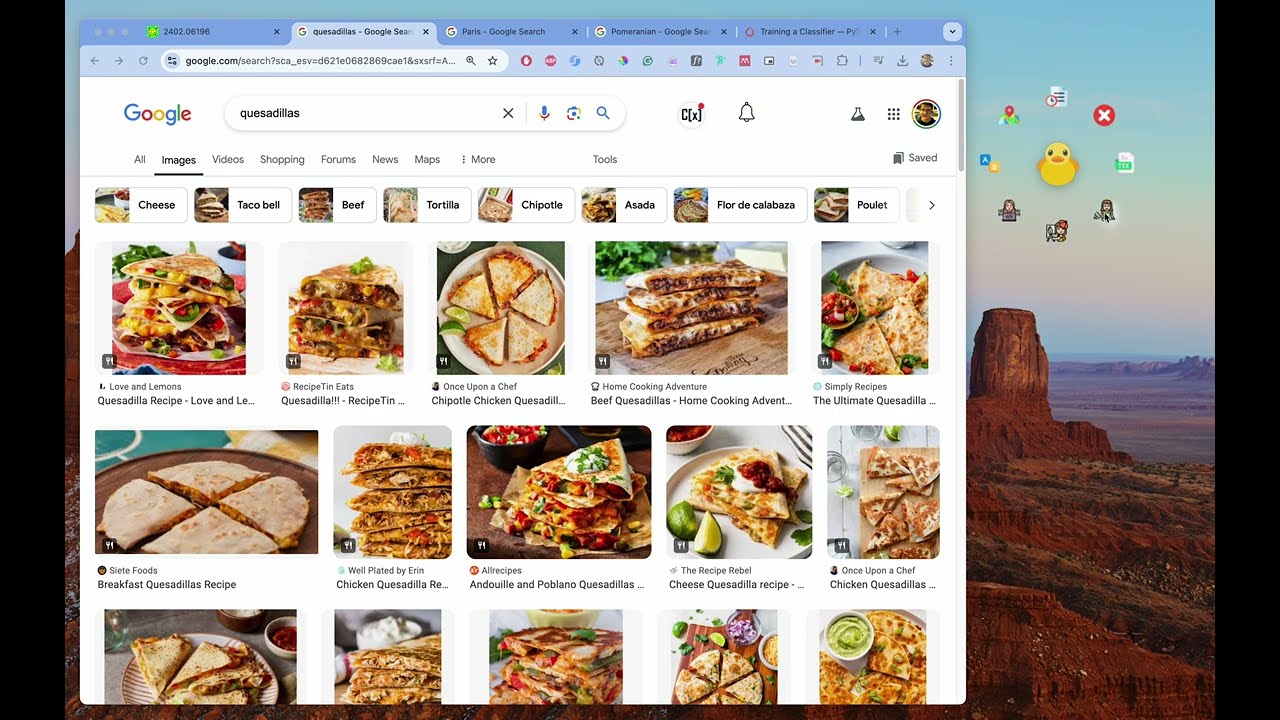Converts screenshots of text to LaTeX, and more using LLMs.
Project description
Quack2Tex 🦆
Ever found yourself battling with equations while writing papers in LaTeX, wishing there was a way to just snap a picture and boom—LaTeX code? Well, I did too. After too many late nights and too much coffee, I finally decided to do something about it. The result? Quack2Tex.
Quack2Tex is a handy tool that facilitates turning images of math equations and charts into LaTeX code, quickly and easily!. But it doesn't stop there! It also has cool features like guessing the location from a photo, identifying recipes from food pictures, and explaining code from images. Rendered as a floating menu on your screen, Quack2Tex is always at your fingertips, making it easy to access anytime you need it.
🚀 Features
- Image to LaTeX: Convert pictures of equations or symbols into LaTeX code—no more manual typing!
- Location Guessing: Upload a photo, and Quack2Tex will try to figure out where it was taken.
- Recipe Finder: Snap a picture of your meal, and Quack2Tex will tell you what dish it is.
- Code Explainer: Got a screenshot of code? Quack2Tex can explain what it does.
See the video below for a demo of Quack2Tex in action:
🧠 Powered By
Under the hood, Quack2Tex leverages state-of-the-art multimodal models like Gemini, GPT-4o, and Lava to analyze the content in the images. Whether you're converting handwritten notes into LaTeX or identifying the location of a stunning sunset photo, Quack2Tex has you covered.
🔧 Installation
To get started with Quack2Tex, follow these steps:
pip install quack2tex
📚 Usage
In the terminal, run the following command:
quack2tex --help # to see the available options
quack2tex --model <model_name> # to run the app
# Example
quack2tex --model "models/gemini-1.5-flash-latest" # fastest model!
quack2tex --model "gpt-4o"
quack2tex --model "llava:34b"
make you set the env variables GOOGLE_API_KEY and/or OPENAI_API_KEY for using google and openai models respectively.
You can also use LLava models through the ollama api.
You can also run the app from python, see the main.py file for an example.
📝 Roadmap
- Support gemini, gpt-4o, and lava models
- Add support for huggingface models
- Allow user add custom actions to the rubber-duck menu
- Persist images and results in a database
- Enable user to access to previous results
- Create window, mac, and linux executables
🤝 Contributing
Want to help make Quack2Tex better? Feel free to contribute by following these steps:
- Fork the repo.
- Create a new branch.
- Make your changes.
- Commit and push your changes.
- Open a Pull Request.
🛠️ Troubleshooting
If you run into any problems, check out the Issues section on GitHub.
📄 License
Quack2Tex is open-source and available under the MIT License—see the LICENSE file for more details.
📧 Contact
Got questions? You can reach out to me at henryruiz22@gmail.com.
Project details
Download files
Download the file for your platform. If you're not sure which to choose, learn more about installing packages.
Source Distribution
Built Distribution
Hashes for quack2tex-0.1.0-py3-none-any.whl
| Algorithm | Hash digest | |
|---|---|---|
| SHA256 | 391edd816cece6de0771e150146816d63bfa7ae2cfcaef84fd1a190ebf3305ee |
|
| MD5 | cf650e1a01de8ba235ce16bcb2d78d7d |
|
| BLAKE2b-256 | 2c28c5ce9992aa8be8ff92e17e23b886021a645cff2fdc878e1fd72964d72b02 |












